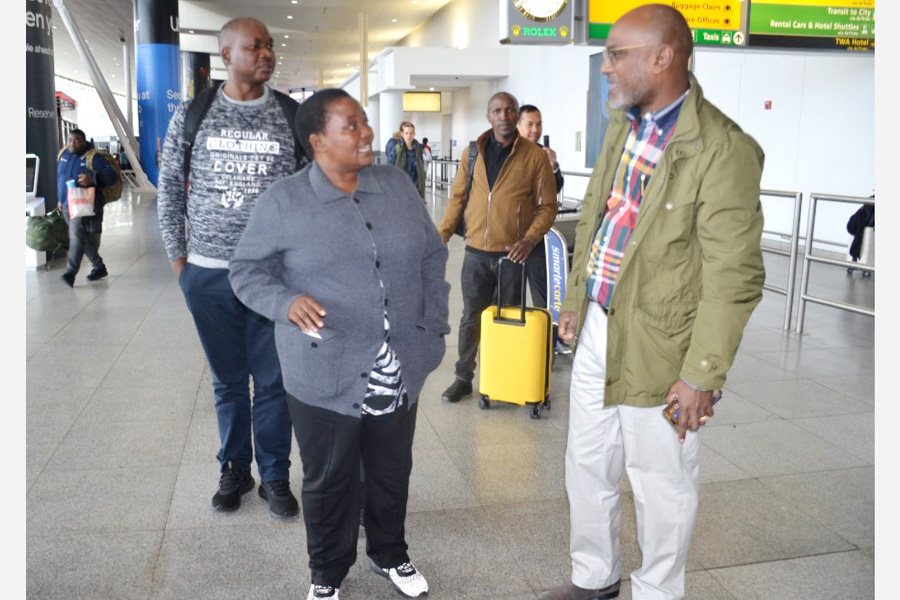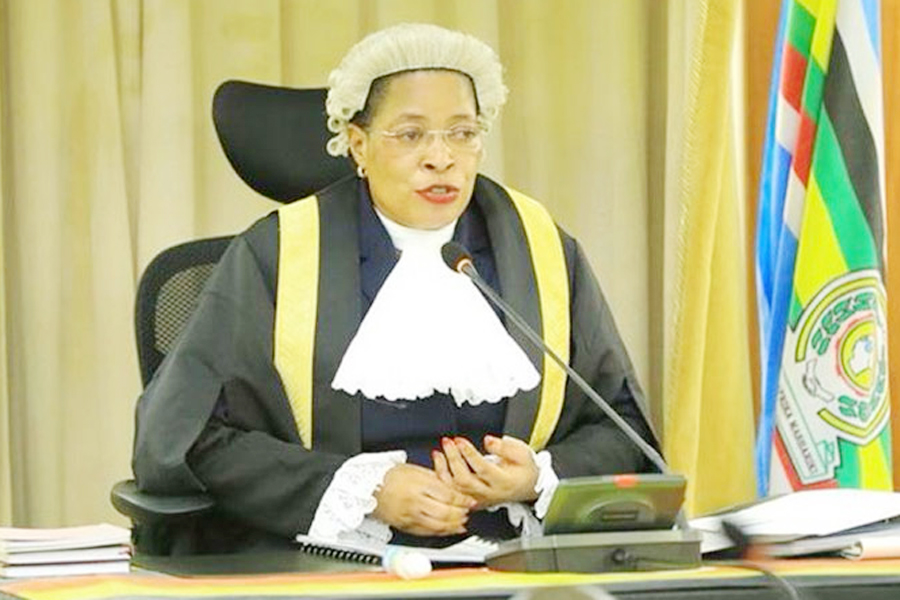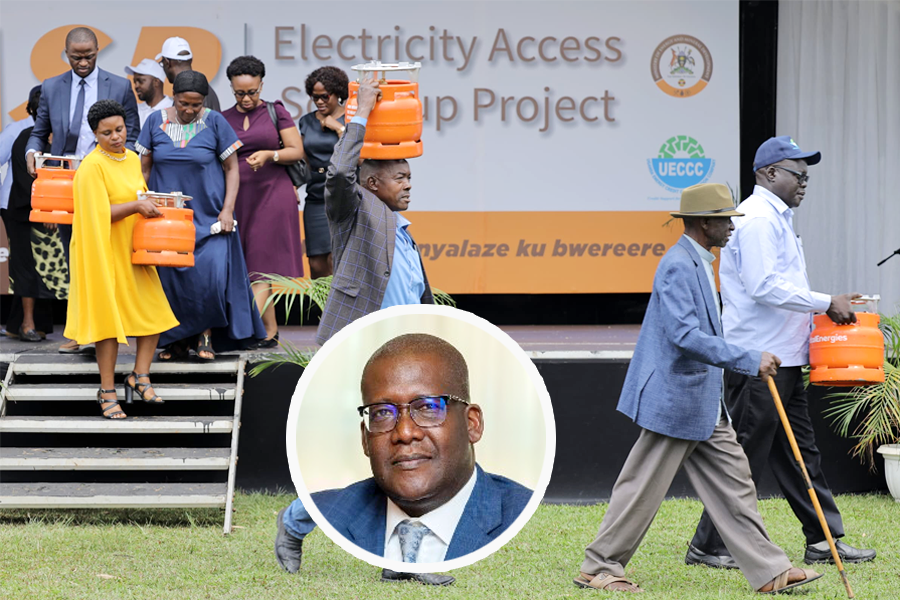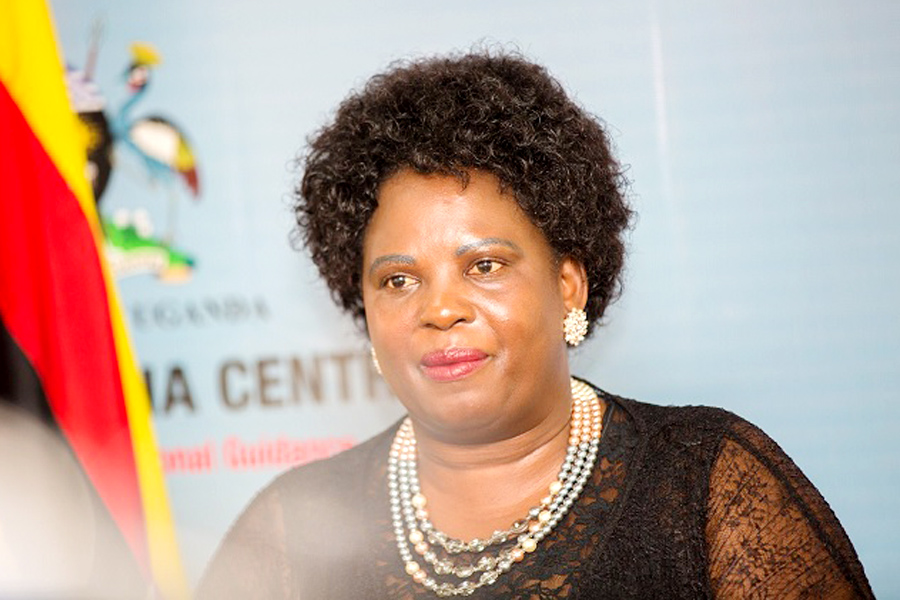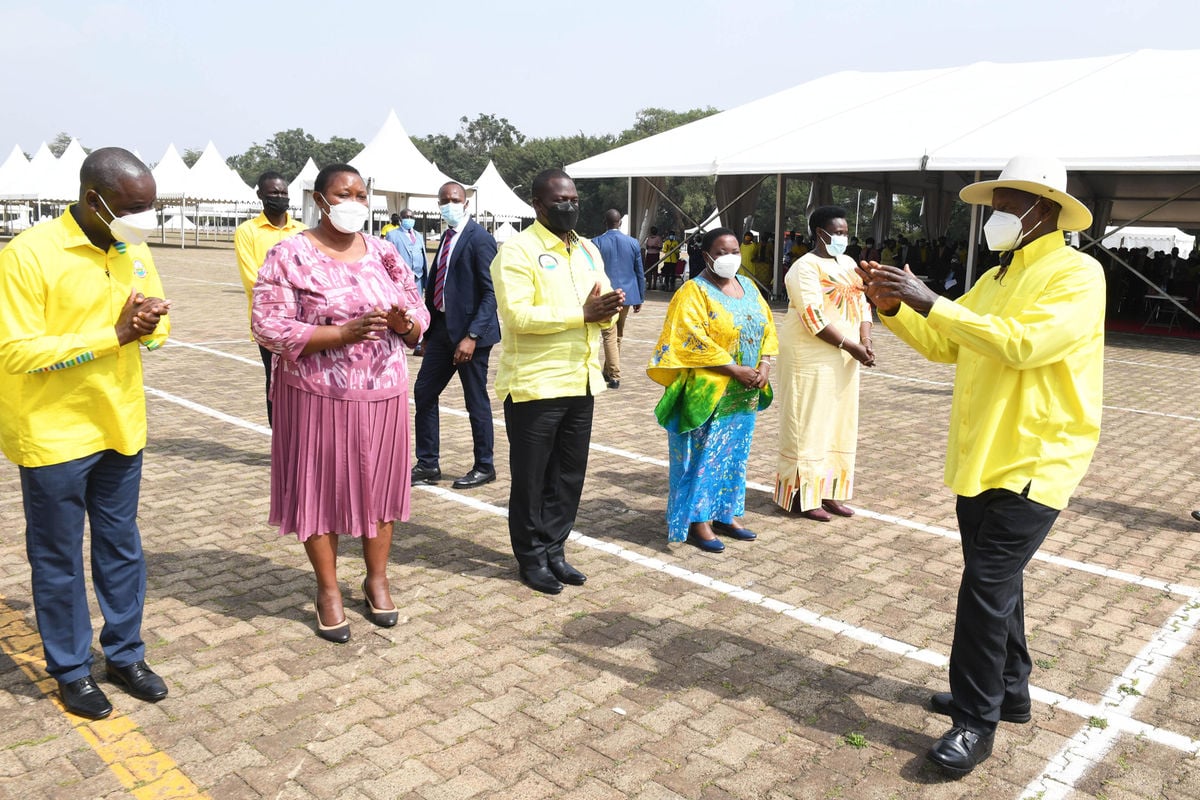Why Russia wants to seize Ukraine's Donbas region
Russia has pulled troops away from Kyiv and shifted most of the focus of its war to eastern Ukraine, after a series of defeats near the capital. This push into the area known as Donbas could mean a protracted conflict.
What would Vladimir Putin need before he could claim his goal of "liberating" Ukraine's old industrial heart and is that possible?
Russian forces have already triggered a humanitarian catastrophe in the east, reducing Mariupol to ruins, but they have failed to inflict defeat on Ukraine's military.
Preparing for a reinvigorated Russian onslaught on the east, President Volodymyr Zelensky vowed: "We will fight for every metre of our land."
Ukraine's best-trained forces were already posted in the east because of an eight-year war with Russian-backed separatists. They are thought to have suffered heavy losses, but are still a significant challenge to Russia's invading army.
What is Ukraine's Donbas?
When President Putin talks of Donbas, he is referring to Ukraine's old coal and steel-producing area. What he really means is the entirety of two big eastern regions, Luhansk and Donetsk, which run from outside Mariupol in the south all the way to the northern border.
Nato also expects Russian forces to try to create a land bridge, running along the south coast west of Donetsk to Crimea.
"The key is that it has been identified by the Kremlin as a Russian-speaking part of Ukraine that is more Russia than Ukraine," says Sam Cranny-Evans of the Royal United Services Institute.
These areas may be broadly Russian-speaking, but they are no longer pro-Russian. "Mariupol was one of the most pro-Russian cities in Ukraine and to level it is beyond my comprehension," says defence specialist Konrad Muzyka, head of Rochan Consulting.
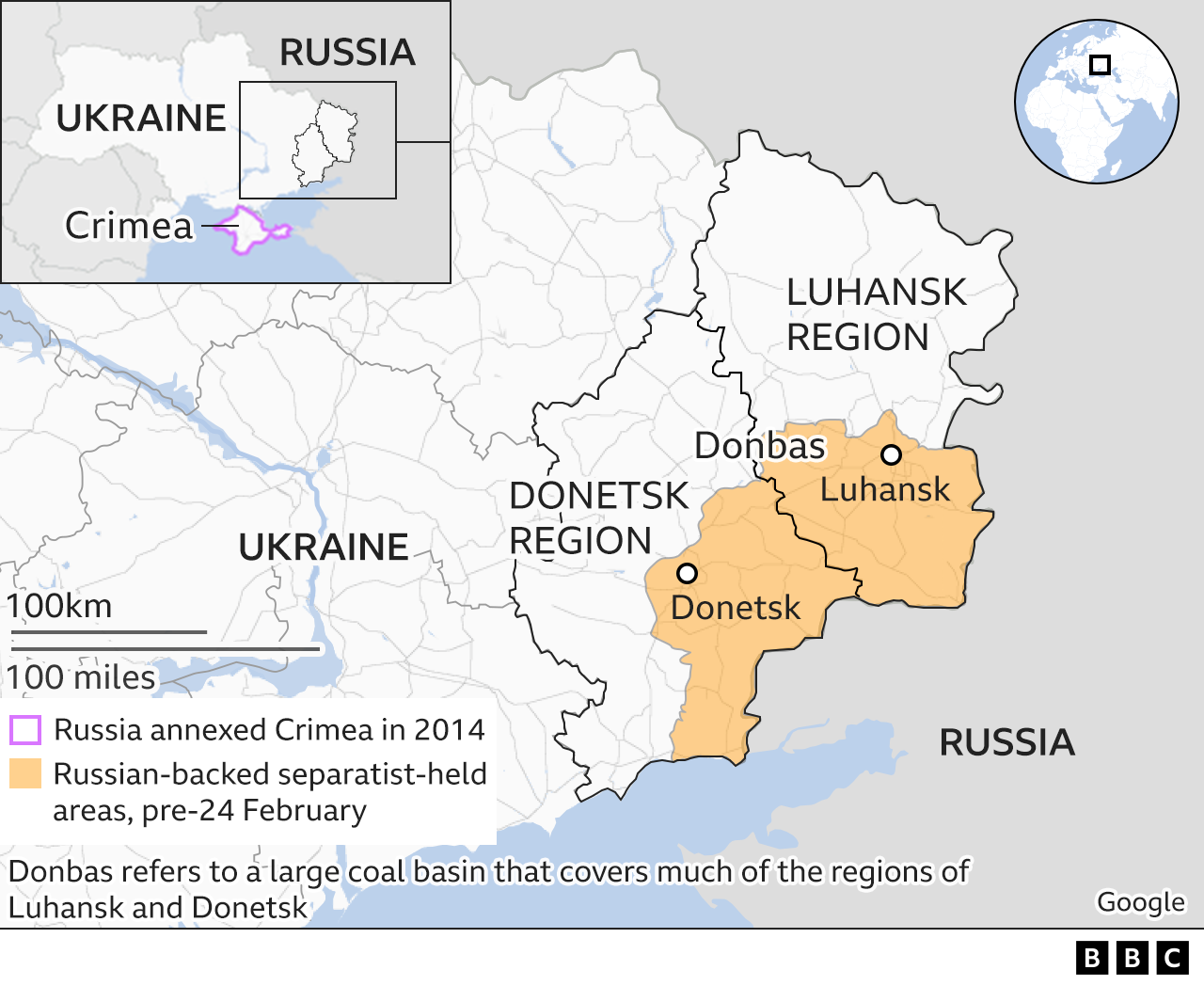

A month into the war, Russia claimed to have taken control of 93% of Luhansk region and 54% of Donetsk. Russia's president is still a long way from subduing the entire area, but even if he were to be able to claim victory, this is a very large territory to control.
Why Putin wants to control Donbas
The Russian leader has repeatedly made the unfounded accusation that Ukraine has carried out genocide in the east.
When the war began, two-thirds of the eastern regions were in Ukrainian hands. The rest was run by separatists, who created Russian-backed statelets during a war that began eight years ago.
Just before the war, President Putin recognised the entirety of the two eastern regions as independent of Ukraine.
If Russia were to conquer both big regions, it would give Vladimir Putin some sort of achievement from Russia's war. The next step would then be to annexe Donbas, just like he did with Crimea after a discredited referendum in 2014.
And if it came before 9 May, he would even be able to celebrate on Victory Day, when Russia's military still marks the defeat of Nazi Germany in 1945.
The Russian puppet leader in Luhansk has already spoken of having a referendum in the "near future", although the idea of even a sham vote in a war zone seems absurd.
What is Putin's strategy?
Russian forces are trying to encircle Ukraine's army in the east, moving in from the north, east and south. "This is a big territory to control, and I think we shouldn't underestimate the geographical complexities of this," says Tracey German, professor in conflict and security at King's College London.
After weeks of fighting, they failed to capture Ukraine's second city of Kharkiv south of the Russian border, but eventually seized control of Izyum - a strategic town further down the main motorway heading into the separatist-controlled east.
"If you look at what they're doing around Izyum, it's following the main lines of the highways and that would make sense, given that they're moving most of their equipment by road and rail," says Prof German.


The towns now in Russian sights have already experienced years of war since Russian-backed separatists first seized large parts of Donbas.
The next big target down the M03 road is Slovyansk, a city of 125,000 people that was seized by Russian-backed forces in 2014 before being recaptured.
The US-based Institute for the Study of War (ISW) says if Ukraine holds on to Slovyansk, Russia's campaign to seize both regions "will likely fail".
Russian forces are bombarding a succession of towns further to the east in areas of Luhansk still under Ukrainian control, including Rubizhne, Lysychansk, Popasna and Severodonetsk. Blocks of flats have been destroyed and civilians killed in their homes.
These towns are important because controlling them would enable Russia to drive west and link up with Russian forces planning to move south-east of Izyum, says the ISW.
 IMAGE SOURCE, SERHIY HAIDAI/LUHANSK OVA
IMAGE SOURCE, SERHIY HAIDAI/LUHANSK OVA
Not only are the Russians trying to control the supply lines by road, they are also trying to block Ukrainian access to rail routes from the west. Rail is the most effective transport for Ukrainian troops and heavy weaponry and it is the fastest route out for fleeing civilians.
Controlling parts of the rail network would also enable Russian forces to move their troops and supplies.
Civilians are being moved out ahead of the Russian advance. "Save yourself and your family while you still can," local leader Serhiy Haidai appealed to residents as buses and trains headed west. Getting buses through to evacuate Rubizhne and Popasna was becoming increasingly difficult, he said.
Trains were still running from Slovyansk on Thursday, but lines have been cut to Izyum in the north and to Mariupol and Melitopol in the south.
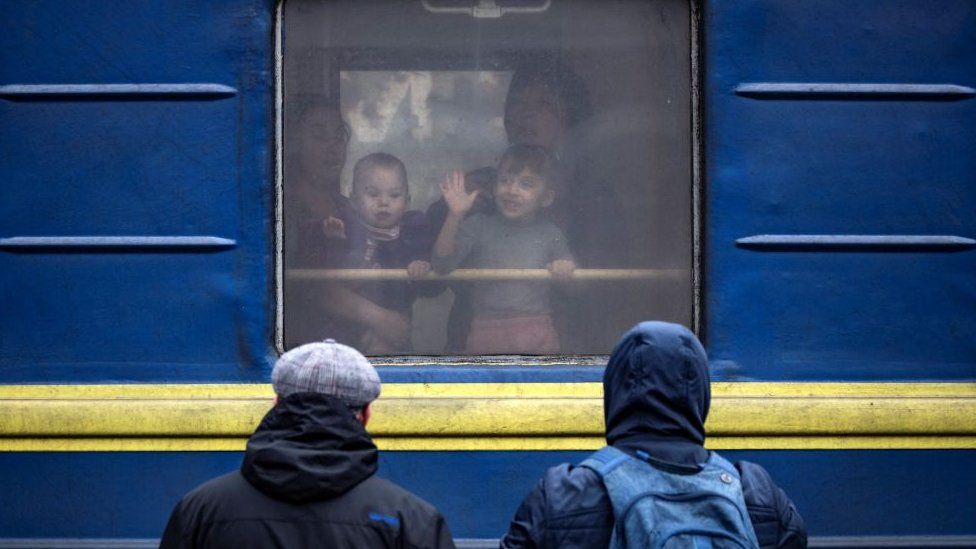 IMAGE SOURCE, GETTY IMAGES
IMAGE SOURCE, GETTY IMAGES
Maryna Agafonova, 27, fled her family's home in Lysychansk, leaving her parents behind as Russian shells continued to fall. "They attacked hospitals and residential buildings. There is no heating and no electricity."
Ukrainian forces were still holding out there in numbers, she told the BBC: "They aren't letting the Russians occupy it."
'Scary' existence in separatist Luhansk
Life under the control of Russian-backed separatists is quieter, although separatist authorities have accused Ukrainian forces of shelling residential buildings and killing civilians. Officials in the Donetsk statelet say 72 civilians have died since mid-February.
One woman in Luhansk told the BBC on condition of anonymity that she had seen a lot of Russian military armour in the city and the atmosphere now was one of fear and caution.
"I'm scared - it's just scary," she said. Men of military age were required to join the local militia, so anyone who avoided the draft was in hiding, she explained.
"They're mobilising [men] on the streets, catching them. There are no men in the shops, in town, on the streets." As a result, all male-dominated businesses are shut, she said.
"We're already Russia, although just informally. Everyone has a Russian passport."
Will Ukraine's forces hold out?
At the start of the war, the 10 brigades that made up the Joint Forces Operation (JFO) in the east were regarded as the best-equipped and best-trained soldiers that Ukraine has.
"We don't really know the strength of Ukrainian forces now," said Sam Cranny-Evans of Rusi, who believes their numbers will have been boosted by volunteers in recent weeks.
Russian forces have already sustained high losses after more than five weeks of conflict and morale is thought to be low. They are made up of men enlisted from the local separatist areas as well as the broader Russian army.
"The main goal for the Ukrainians is to inflict as big losses on the Russian side as possible and the Ukrainians are using asymmetric tactics to avoid big battles," says Konrad Muzyka.
One man called Mykyta who managed to flee the Russian bombardment of Mariupol said he was confident the Ukrainian army would succeed in fighting back.
"Some day they will return our cities, the Azov battalion will not surrender Mariupol," he told the BBC. "The Ukrainian army is very cunning, I didn't see them in my city, but I heard them, they are very good at disguise."
Source: BBC



